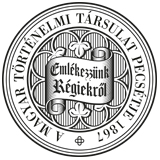Századok – 2001
TANULMÁNYOK - Cieger András: A bizalmatlanság kora - Lónyay Menyhért a kormány élén I/61
LÓNYAY MENYHÉRT KORMÁNYA 101 András Cieger L'ÈRE DE DÉFIANCE. Menyhért Lónyay à la tête du gouvernement (Résumé) L'étude est en fait une analyse de cas. L'auteur présente, à travers le portrait du comte Menyhért Lónyay, Premier ministre, l'intégrité du régime politique hongrois des années 1870. L'étude permet de suivre les liens entre les divers facteurs du pouvoir (roi, gouvernement, partis politiques), les mécanismes de décision, d'estimer les tensions internes du cabinet, ainsi que la relation contradictoire du gouvernement et du parti gouvernemental. Plus largement, le lecteur se voit proposer un tableau des évolutions des idées de l'élite politique libérale qui assumait un rôle gouvernemental, des échecs de ses projets de réformes, et des grandes crises internes du régime politique hongrois. Un autre chapitre est consacré à la question de la corruption du gouvernement, et du phénomène de l'accusation de corruption. La vie politique et économique de la Hongrie des années 1860-1870 offre des exemples de plusieurs types: abus d'élections, corruption des politiques, commandes d'état sans adjudication, incompatibilité des députés, etc. Outre cela, l'accusation de corruption devenait une arme politique dans la main de l'opposition. Les députés de l'opposition et la presse -partiellement pour renforcer leurs positions - lancèrent une bataille concertée contre le gouvernement, mais surtout contre Lónyay. L'auteur met en exergue l'état d'âme de cet homme politique, et ses réactions face aux accusations de corruption dont il était l'objet, d'après des documents personnels (journal, correspondance) du Premier ministre. La conclusion finale de l'étude est que la chute rapide de Lónyay (il demeura Premier ministre pendant un an) fut cause non pas des accusations de corruption (même si cela fut inscrit dans la mémoire de l'époque suivante). Cette période fut l'ère durant laquelle se forma en somme la structure de parti et du gouvernement caractéristique d'un État civil moderne. Dans cette époque de transition, la confiance politique envers les dirigeants du pays pouvait chuter rapidement. THE AGE OF MISTRUST. The Government of Menyhért Irányai András Cieger (Summary) The present paper is in fact a case-study: through the portrait of prime minister Menyhért Lónyai the author analyses the whole political system of Hungary in the 1870s. The study examines the mutual relationship of the different elements of power (king, government, parties) and the mechanisms of governmental decision-making, and detects the internal tensions within the government as well as the strained contacts between the government and the governing party. In a wider context the reader is offered a glimpse of the transformation of the ideology of the liberal political elite in the course practical politics, of the failure of its reform schemes and of the first great crisis of the modern Hungarian political system. An individual chapter is devoted to the theme of governmental corruption and of accusations of corruption. The political life in Hungary in the 1860s and 1870s was rich in all sorts of corruption: electional abuse, political bribery, state commissions without public tenders, cases of incompatibility etc. At the same time the accusation of corruption became a political weapon in the hands of the opposition. Backed by the press, they launched concentrated attacks against the government and Lónyai himself, not the least in order to strengthen their own position. On the basis of the prime minister's personal papers (diary, correspondence) the author analyses the changing mood of the politician and his reactions to the accusations.
